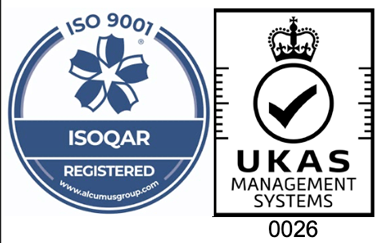Maintaining and Extending the Lifespan of Your Yacht’s Watertight Seals
26th June, 2025
With yachting season officially underway, it is important to ensure that your vessel is in perfect condition before embarking on any journey on the water this summer.
Maintaining and extending the lifespan of your yacht’s watertight seals is crucial for looking after your vessel overall, ensuring you can take as many trips on the water as possible.
This expert guide will explore watertight seals and why they are a significant part of your vessel, how to spot worn out seals and when is best to repair or replace a damaged seal and top tips for looking after watertight seals to maximise durability and encourage optimal performance.
What is a Watertight Seal?
Watertight seals are primarily used in the marine industry, on boats and yachts, as well as caravan seals, to create a pressure seal and keep people and possessions safe by keeping water out. Choosing the right rubber seal for your application depends on a variety of factors, like ensuring the seal is temperature resistant, chemically compatible and pressure tolerant.
Yacht Seals
Yacht seals are a type of rubber seal used to prevent water intrusion and keep your vessel’s interior safe, but, because they are designed and made as a bespoke product for each customer, yacht seals differ from industrial watertight seals.
There is no universal industry standard yacht seal, since they are a water vessel which come in a variety of types, manufactured by different companies, and tend to be more lightweight than other marine seals.
Looking after these seals effectively maximises durability and ensures optimal performance.
Worn out seals
Since they are made from rubber materials, yacht seals do not have an infinite lifespan and they will most likely degrade as a result of exposure to oxygen, heat or light. Rubber degradation caused by these factors can be further accelerated by reactive gases and stress on the material, resulting in rubber becoming faded, cracked and less flexible. Rubber does not last forever, and you will need to maintain strict routine inspections to check the condition of your yacht seals.
On a yacht, this deterioration will lead to rubber seals shrinking and cracking which can result in water entering your yacht and causing potential damage to the vessel. Some environmental factors, like the type of water the yacht frequents, can impact the lifespan of your yacht; vessels operating primarily in freshwater environments typically suffer less corrosion and deterioration than those used in saltwater.
Human use of seals, like propping hatches and windows open can crush the seals and impact them so they no longer work properly, which can lead to water entering your yacht through the damaged seal.
You can prolong the lifespan of your seals from the moment they are fitted onto your yacht. This means they will work longer and keep your yacht safer. There are multiple ways you can keep your yacht’s seals working optimally:
- Routine inspection procedures: each time you board your yacht, and at the beginning of yachting season, inspect the vessel for cracks, gaps or any signs of general wear and tear around the seals.
- Cleaning your seals: using soap and water, gently clean your yacht’s seals on a regular basis. This will give you an early warning if there are any leaking seals throughout your yacht.
- Use a silicone-based lubricant: applying this to your yacht’s seals helps them remain strong but flexible, and ready to continue keeping water out.
Replacing worn out seals
Since only the smallest amount of water can cause significant damage to your yacht over time, you should consider replacing watertight seals on your yacht as soon as you notice the first signs of damage.
Repairing damaged seals is possible by using an appropriate rubber sealant to close any gaps and prevent water leakage, but these repairs are only temporary. It’s highly likely that the damage to the seal, and your yacht overall, will only worsen if you fail to replace watertight seals immediately.
Replacing any damaged yacht seals as soon as possible can prevent water leaks and damage to your vessel, meaning you have peace of mind about your yacht’s safety during any trips on the water.
How our yacht seals are made
At Aquaseal, we can manufacture bespoke yacht seals to any specification. If you are looking for a yacht seal with extra fire protection, increase resistance to high or low temperatures, or a bespoke colour treatment to match your vessel’s exterior, we design and create seals from a range of materials.
Several materials can be used to make yacht seals, including Ethylene Propylene Diene Monomer (EPDM), neoprene or natural rubber. Neoprene is best suited to higher temperatures, whilst nitrile options are more effective for gas and oil resistance.
Regardless of which material is best suited to your yacht, effective inspection and regular cleaning of yacht seals will help to maintain and extend the lifespan of your yacht’s watertight seals.
Ready to order your bespoke yacht seal?
If you are looking for a bespoke seal for your yacht ahead of a trip on the water this summer, the team at Aquaseal Rubber are here to help you.
Since developing our flagship product – the Aquaseal Hatch Seal – over 40 years ago, we have provided a variety of watertight seals, including yacht seals, to clients all over the world.
If you are looking for a new yacht seal, contact our team today.


